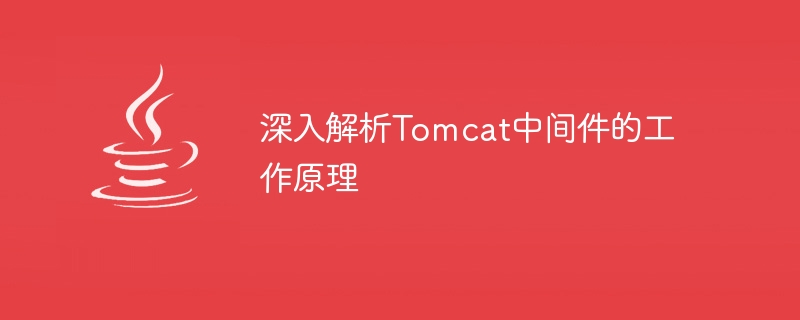

In-depth analysis of the working principle of Tomcat middleware requires specific code examples
Tomcat is one of the most commonly used application servers in Java development, which can make Java Web applications Able to run on the server. As a middleware, Tomcat acts as a bridge between the browser and Java web applications, responsible for processing HTTP requests and responses.
The working principle of Tomcat can be divided into the following steps:
After understanding how Tomcat works, we can better understand through a specific code example.
Suppose we have a simple Java Web application that contains a Servlet class named HelloServlet to handle requests from clients:
@WebServlet("/hello")
public class HelloServlet extends HttpServlet {
@Override
protected void doGet(HttpServletRequest request, HttpServletResponse response) throws ServletException, IOException {
response.setContentType("text/html");
PrintWriter out = response.getWriter();
out.println("<html>");
out.println("<head><title>HelloServlet</title></head>");
out.println("<body>");
out.println("<h1>Hello, world!</h1>");
out.println("</body>");
out.println("</html>");
}
}In the above code, we pass @WebServlet The annotation maps HelloServlet to the URL path "/hello". When the client sends a GET request to "http://localhost:8080/hello", the Tomcat container will find the HelloServlet according to the URL and call its doGet() method to process the request. In our example, HelloServlet will return an HTML page containing "Hello, world!"
It should be noted that when deploying and running Tomcat, we need to place the above code in the correct directory structure and configure the corresponding web.xml file. The specific configuration method can be adjusted according to actual project needs.
To sum up, Tomcat, as a middleware, forwards the HTTP request sent by the browser to the appropriate Servlet for processing through the cooperation of the connector and the container, and returns the response generated by the Servlet to the client. At the same time, Tomcat also supports filters and static resource processing, which plays an important role in actual projects.
Through an in-depth analysis of the working principle of Tomcat and the above code examples, we can better understand the working principle of Tomcat as a Java Web application server, which will be of great help in developing and debugging Java Web applications.
The above is the detailed content of Analyze the operating mechanism of Tomcat middleware. For more information, please follow other related articles on the PHP Chinese website!




